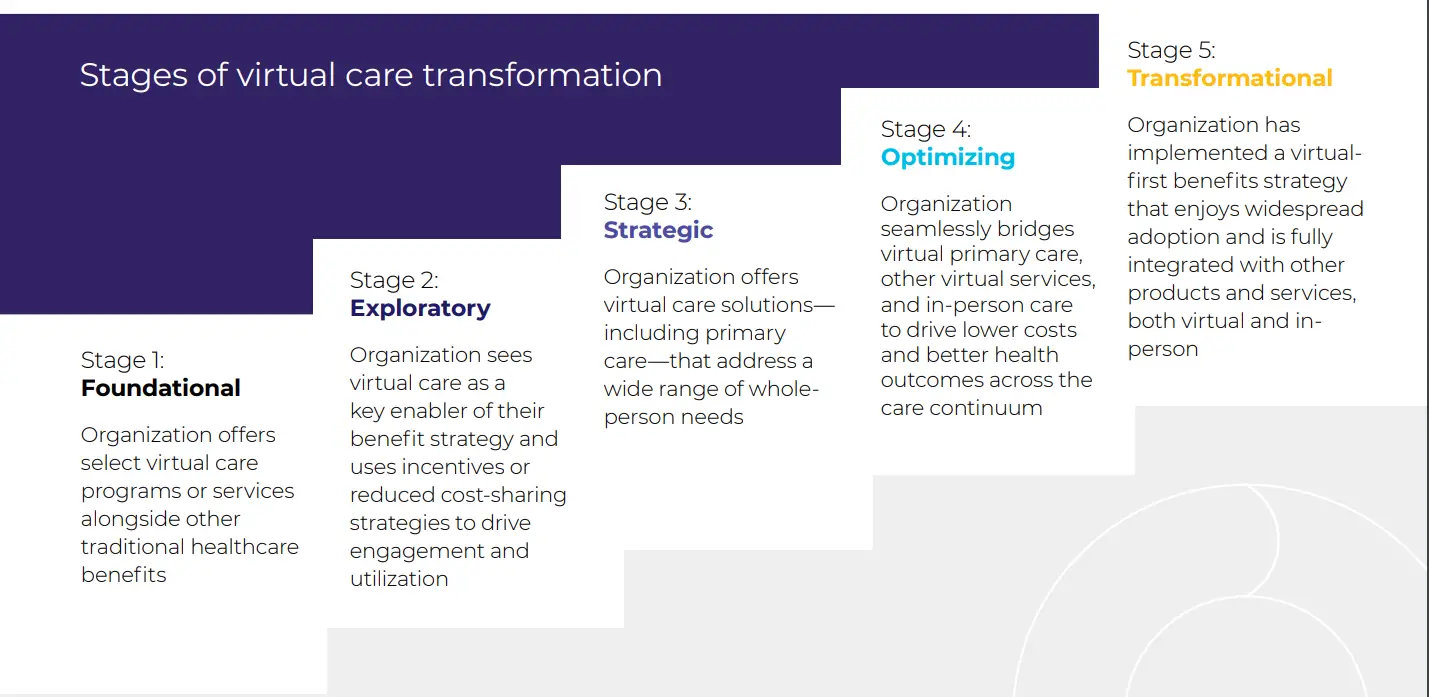
What You Should Know:
– Today Teladoc Health announced a first-of-its-kind Virtual Care Transformation Model for employers.
– The model offers a comprehensive roadmap to move virtual care forward based on an organization’s resources, priorities and goals.
Virtual Care Transformation Model: Roadmap to Evolve Virtual Healthcare Benefits
Recent data shows that 80% of large employers believe virtual care will have a significant effect on how healthcare is delivered in the future, a 52% increase from 2018. Yet many struggle to understand how it fits into their existing infrastructure and business strategies. The Virtual Care Transformation Model offers a personalized, comprehensive roadmap to success based on your organization’s resources, priorities and goals— helping bring all the pieces together to maximize healthcare outcomes and access across a population.
The Virtual Care Transformation Model is scalable to address organizations of different sizes and industries and is based on five core dimensions of a virtual care strategy including:
1. Governance: Identifies how an organization’s leadership and governance drive support and implementation of virtual care services.
2. Plan Design: Assesses how well an organization supports a virtual-first approach that reduces healthcare costs for the organization and for plan members, aligning financial incentives across stakeholders
3. Program Offerings: Measures the breadth of whole-person virtual care services offered across the
continuum to specific populations based on healthcare needs.
4. Member Experience: Explores how well virtual care services are promoted, integrated and able to drive overall healthcare engagement and utilization.
5. Performance Measurement: Measures the degree to which virtual care is delivering healthcare value— improving costs, access, outcomes and utilization.
Reviewed by an objective panel of experts skilled in anticipating market trends and advising organizations on their overall business strategies, this industry standard is meant to help understand current gaps that stand in the way of an organization reaching its virtual care goals—helping bring all the pieces together to maximize healthcare outcomes and access across a population.
“Our study findings suggest a need for a clear framework to guide employers through their unique virtual care evolution,” said Kelly Bliss, president, U.S. Group Health at Teladoc Health. “Leveraging our expertise and partnerships in the virtual care space, we have created the first industry-standard model to help guide employers better utilize virtual care to improve employee productivity, employee satisfaction, and health equity while at the same time decreasing healthcare costs.”
